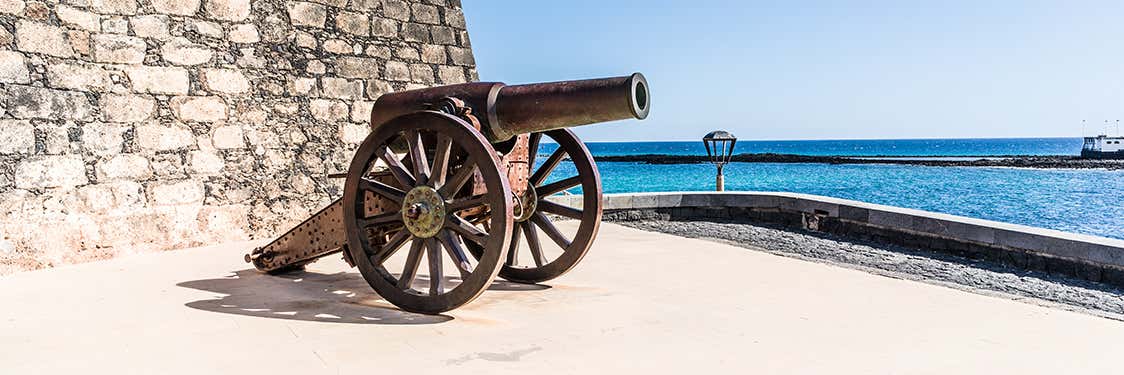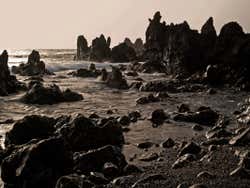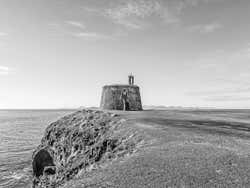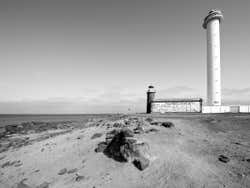
History of Lanzarote
Learn about the history of Lanzarote from the arrival of its first settlers to when it became one of the most important tourist destinations in Spain.
First settlers on Lanzarote
The second oldest of the Canary Islands, created by a volcanic eruption some 15 million years ago, Lanzarote's history is nonetheless shrouded in mystery. Very little evidence of its early settlement has been preserved, however, we do know that the first inhabitants of the island were the Majos tribe of the Guanches, thought to have arrived there around 1000 BC from North Africa. The Majos called their home Tyterogaka; it wasn't until the 14th century when Genoese navigator Lancelotto Malocello came across the island that he named it Lanzarote after himself.
Conquest of Lanzarote
In 1402, French explorer Jean de Bethencourt, supported by the Castilian king, landed on the island and quickly overran it thanks to the island's hard-to-defend geography. The first Diocese of the Canary Islands was established close to Playa Blanca, and the island's capital was later moved to the old Majo village of Teguise.
The Castilian Crown granted the lordship of Lanzarote and the neighbouring islands of Fuerteventura and El Hierro to nobleman Diego de Herrera in 1454, and it would remain a feudal system under him until 1812. Despite Spanish claims to the islands, they would continue to be attacked by French, Moroccan and British pirates.
During this period of conquest, the native Guanches of the island were enslaved and sold into labour by the Europeans. Despite seeking refuge in places like the Cueva de los Verdes, it is estimated that by the mid-17th century, only 300 Majo people remained on Lanzarote. The island's population grew, new crops were planted and a market economy was created according to European standards and beliefs.
Volcanic eruptions
The following centuries were marked by instability, crisis and drought. If life wasn't hard enough on Lanzarote, nature would intervene and make it worse: from 1730 to 1736, the island was hit by a series of massive volcanic eruptions.
For six years ash and lava spewed from Timanfaya and other volcanoes. This blocked the sunlight, covered up to a quarter of the island and destroyed some 11 villages. Much of Lanzarote's archaeological remains were buried under the eruptions.
The event forced mass emigration of Lanzarote's inhabitants to Cuba and the Americas, but those who remained would find that the eruptions had left rich and fertile volcanic soil behind. After a few years, the island stabilised again and the city of Arrecife began to gain political and economic importance. Its port made it a hub for commercial activity, and in 1852 it was named the new capital of the island. By this point, feudalism had ended and the Canary Islands had been designated a single Spanish province.
Beginning of the 20th century
At the beginning of the 20th century, Lanzarote experienced a commercial boom with thriving imports and exports and a boost in the workforce. New crops such as sweet potatoes, melons and tobacco started to be grown and economic growth began to attract more and more tourists.
Under the Spanish dictatorship from 1936 to 1975, the island kept a low profile and survived on its own resources. The fishing industry was found to be another promising contributor to the economy, but nevertheless during this period, Lanzarote experienced another large population exodus due to the lack of jobs.
Art and culture on Lanzarote
In 1966 the Lanzarote-born artist César Manrique returned from his stay in New York and settled permanently on the island. Inspired by its unique geography, he subsequently transformed Lanzarote into a cultural hotbed.
Over the following years, the island saw campaigns for the conservation of archaeological remains and policies in favour of sustainable tourism, aiming to attract more and more people to the experience its cultural wealth.
This fight to improve Lanzarote worked a little too well, and the island soon began experiencing mass tourism. An increasing number of visitors meant unsustainably over-exploited resources and led to protests from a large part of the population calling for a balance that would be beneficial to the island.
Lanzarote today
Nowadays, Lanzarote is one of the most popular tourist islands in Spain, boasting a unique atmosphere and ever-improving infrastructure. The entire island has been declared a UNESCO Biosphere Reserve and, to this day, there is a continued effort to implement policies working to achieve sustainable tourism.



